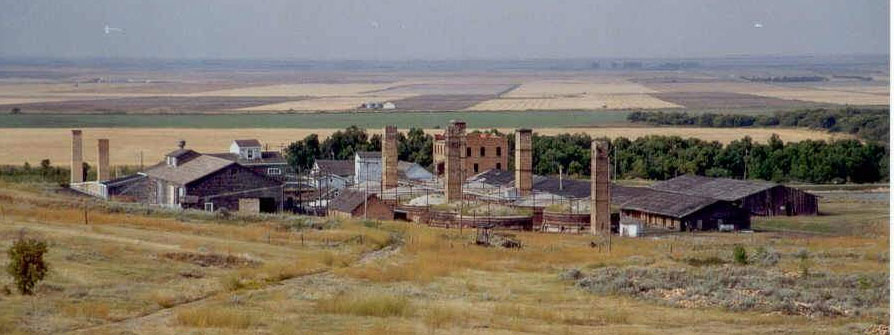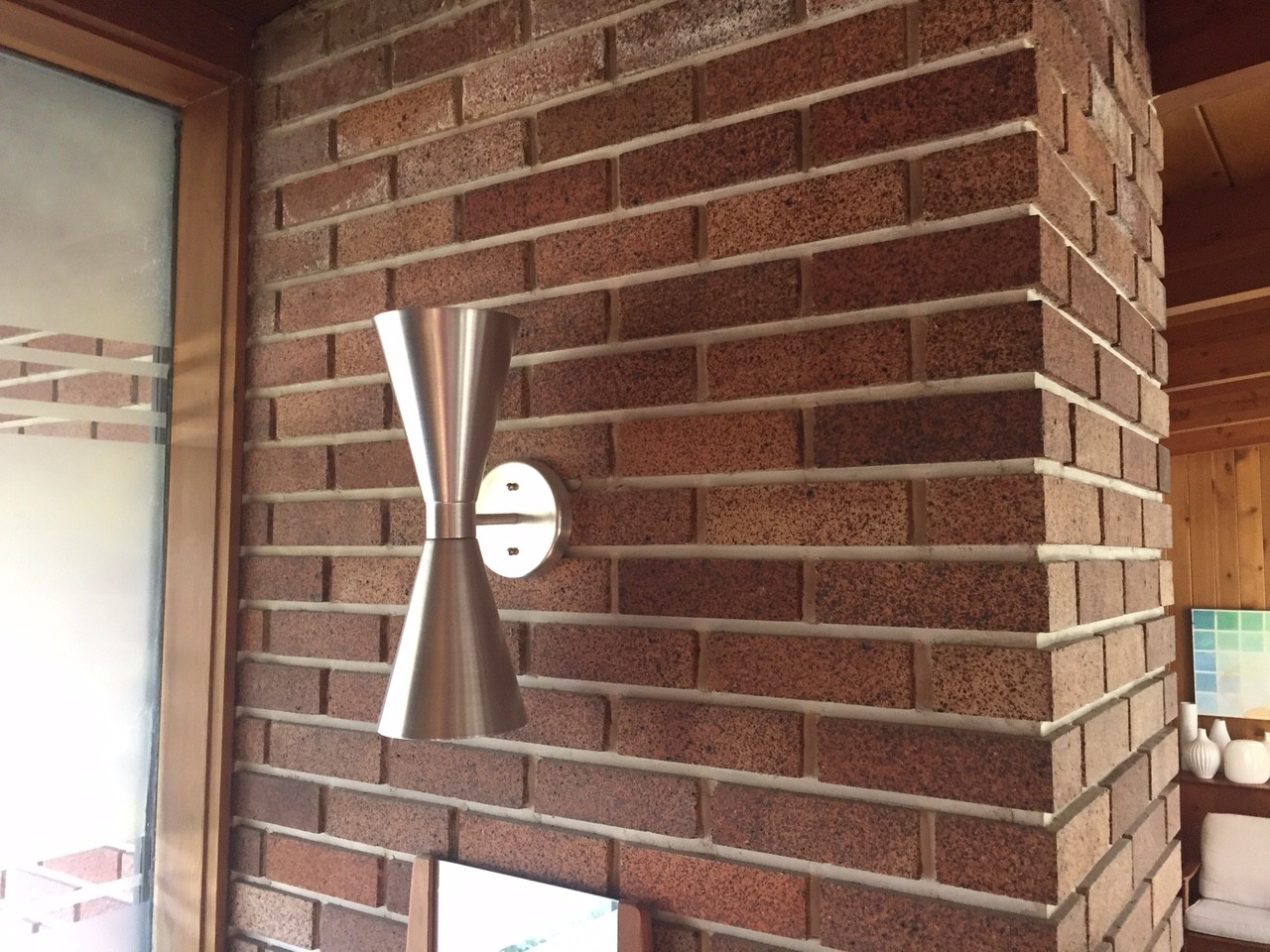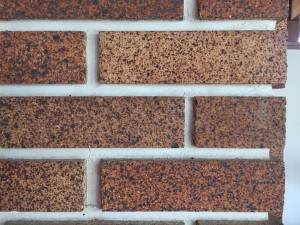Claybank brick in the Calgary Trend House
One of the great resources we have had in our journey of discovery in the Trend House has been the previous generations of tradespeople who were around when the house was built and can sometimes shed some light on the little details here and there.
Originally specified as being made of flagstone, the wall at the front entrance of the house which houses the fireplace and creates a mass that spans both indoors and outdoors (a very common design element of Mid-Century Modernism) is made of a brick which has an unusual flecked appearance.
When the electricians came in to deal with the remote wiring system, one of them decided to bring his father, a retired electrician from the era, to help out, and as he was leaving the house he mentioned “Oh – you have some Claybank brick here, did you know they used this in warships in WWII?”. We had never heard of this before but it made sense – using industrial materials in a residential context was another common approach of Mid-Century Modernism, and we decided to find out more…

The former Claybank Brick Plant is nestled at the foot of the Dirt Hills in south-central Saskatchewan. Designated a National Historic Site, the plant has been frozen in time with almost all of the equipment and buildings preserved and in fully working condition.
The plant which was built starting in 1912 was known for it’s fine face brick which was used on many prominent houses and commercial buildings across Canada, including such prominent buildings as the Chateau Frontenac in Quebec City. Among many others, the beautiful Gravelbourg Cathedral is faced entirely of Claybank brick as are a number of Court Houses and other public buildings.
The rare fire brick produced here lined the fire boxes of the CN and CP Rail line locomotives, and during the Second World War, the fire brick was used to line the fireboxes of Corvettes and Destroyers that were being built in Canadian shipyards.
One of the notable uses for the fire brick produced at Claybank was to line the rocket launch pads at Cape Canaveral, Florida for the Apollo space missions and used for the Space Shuttle missions.
Not only does the brick plant constitute one of the best preserved examples of early 20th century industrial activity in Canada, but is one of a small number of heritage attractions in Saskatchewan to have achieved formal National Historic Site designation status.
For more detailed history, photos and stories of the people who worked at the plant, visit the Virtual Museum of Canada’s excellent exhibition “A Little Brick Plant in the Middle of Nowhere” via the link below:


